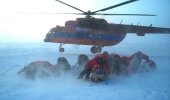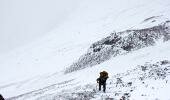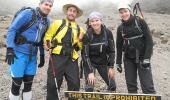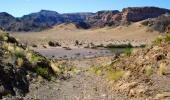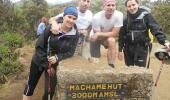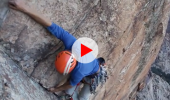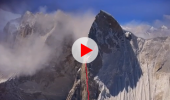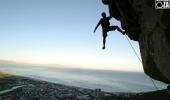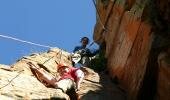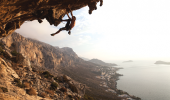Words by Kobus Bresler | Photos by Kobus Bresler & Mark Jackson
“Great things are done when men and mountains meet. This is not done by jostling in the street.” - William Blake
Photo credit: Kobus Bresler
What makes a trip to Kilimanjaro so special and does the mountain still possess the same magic it did when Hans Meyer recorded the first summit in 1889?
I have summited Kili three times and while I cannot answer these questions - as well as numerous other questions I hear like, “What is it really like?” or “My aunt said it was hard, but my cousin found it really easy. Which one is it?” and probably the most frequent question, “Should I be super fit?” to the hardest question, “Which operator should I choose?" - as every individual will have their own unique experience, I can share what I have learned. Keep in mind that this is my opinion and your chosen operator may agree or disagree, and your research may show otherwise.
One answer that remains uncontested is that Kilimanjaro is a magnificent mountain! As South African’s we are incredibly fortunate to have this majestic rock only a four-hour flight away from Johannesburg.
The only way to really answer these questions is to DO IT yourself. But based on my experience what is important is that you prepare yourself through knowledge - and anyway, the research should be part of the fun. Preparation is more than just physical fitness. Mental preparation is an important aspect of getting ready for your experience too. But before I go any further, climbing Kili should be a trip you really want to do. Once you have made your decision, picture yourself standing on the Kibo crater rim looking down over Africa. Imagine the beauty of Africa at your feet as the sun rises to greet you. This being said, unfortunately not everyone makes it to the summit. But as any good mountaineer will tell you, it is more important to get back down safely than to summit. Get pumped as you are about to experience something that many people never will.
Here are a few things you shouldn’t do during your preparation:
• Change your whole diet and lifestyle, except if you want to.
• Wake up at 4am every morning for a run because you think you have to.
• Stress that you won’t be able to do it.
When you start your preparations it makes sense to consider what you will be attempting and how you will be doing it. You will be hiking every day, with some days being longer than others. You will carry a pack every day, and although it won’t be extremely heavy this may be a new experience to you. You will be on your feet going up and down, but mostly up. As you gain altitude your body will have to work just a little harder to achieve results. This means your heart will need to beat a little faster and harder. If you take all of this into account it becomes easier to plan your preparation.
In terms of fitness, you don’t have to be super fit, but you will need to have a good level of fitness. The best way to train for a mountain bike race is to get on your bike and ride it. Similarly, the best way to prepare for long days on foot is to get out on the trails. Your feet will need to be prepared for the excursion as the terrain on Kilimanjaro is extremely diverse, the tougher parts mostly rocky and dusty. Get out on weekends leading up to your trip and go hiking. We have spectacular hiking routes all over so not only are you getting prepared, you are seeing the beauty of your own country too. Plan your hikes to become progressively longer and possibly even steeper. In the process you will train the correct muscles, as well as get used to carrying a pack.
Many websites have training guides advising you to go for a daily run and do many other forms of training. If you have the time or the inclination then great, but who really has the time to suddenly change their whole routine these days? Schedule exercise that you enjoy and fits in with your current lifestyle. The important issue here is that you DO something to get fitter and be more prepared. Lying on the couch every day will not get you to the top.
The real Kili challenge is altitude and unfortunately this is the only aspect you cannot truly prepare for. Our bodies handle the stress of depleted oxygen and low pressure differently and there is no way of knowing until you get there. However, a trip to the High Drakensberg will help as this takes you above an altitude of 3,000m on foot. Medication is also available to help your body cope with altitude related problems, but most of these are only available on prescription. A visit to your doctor prior to departure is a must and you will feel much better after getting the nod from an educated professional. Always tell your mountain guide about any prescription and other medications you decide to use during your ascent.
Diarrhoea can be a problem and make your trip uncomfortable. Take the right medication with and keep your hands and face clean. Although there's enough drinking water en route, there are no real ablution facilities on the mountain. A small bottle of hand sanitizer will go a long way on a trip like this.
Having the correct equipment is an important aspect towards ensuring a pleasant trip. No one likes being cold and miserable, and I have yet to meet anyone who enjoys blisters on their feet. Kitting yourself out can be a costly exercise, but many operators have kit that you can rent. Don't leave this to the last minute, shop around and get different opinions. Make sure you are comfortable with the kit you buy, as you will be wearing it. First on your shopping list should be the right boots and socks, so that you can wear the boots in during your preparation hikes. There are a number of gear guides available, which means that there's no need for hasty decisions, rather make comparisons until you find what you like.
There are many other aspects that form part of your preparation, but I've touched on the most important ones. What is more important than anything else is researching and booking your trip.
Pay a visit to Africa’s magic mountain and extend your list of war stories. You will be all the better for it.
Useful tips while preparing for Kilimanjaro:
1. Use an operator with a good track record. Ask for references.
2. Pack enough batteries for your camera and head lamp.
3. Pack sufficient energy bars and sweets for use between meals.
4. Try out medication and water purification at home first to check for negative responses.
